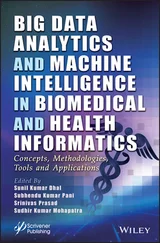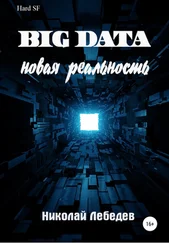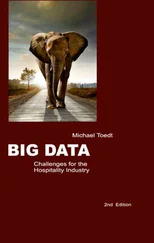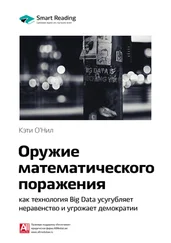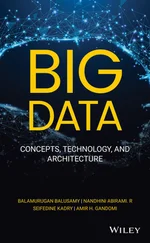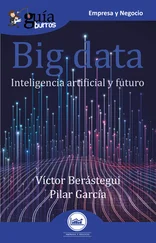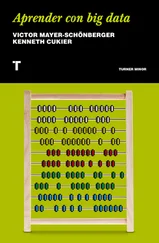1 COVER
2 LIST OF FIGURES
3 LIST OF TABLES
4 PREFACE
5 ACKNOWLEDGMENTS
6 ACRONYMS
7 CHAPTER 1: Introduction1.1 Motivation 1.2 Assumptions 1.3 For Whom Is This Book? 1.4 Book Structure
8 CHAPTER 2: Evolution of IT Architectures and Paradigms2.1 Evolution of IT Architectures 2.2 Actors and Agents 2.3 From ACID to BASE, CAP, and NoSQL – The Database (R)evolution 2.4 The Cloud 2.5 From Distributed Sensor Networks to the Internet of Things and Cyber-Physical Systems 2.6 The Rise of Big Data
9 CHAPTER 3: Sources of Data 3.1 The Internet 3.2 Scientific Data 3.3 Industrial Data 3.4 Internet of Things
10 CHAPTER 4: Big Data Tasks 4.1 Recommender Systems 4.2 Search 4.3 Ad-tech and RTB Algorithms 4.4 Cross-Device Graph Generation 4.5 Forecasting and Prediction Systems 4.6 Social Media Big Data 4.7 Anomaly and Fraud Detection 4.8 New Drug Discovery 4.9 Smart Grid Control and Monitoring 4.10 IoT and Big Data Applications
11 CHAPTER 5: Cloud Computing 5.1 Cloud Enabled Architectures 5.2 Agents and the Cloud
12 CHAPTER 6: Big Data Architectures 6.1 Big Data Computation Models 6.2 Publish-Subscribe Systems 6.3 Stream Processing 6.4 Higer Level Big Data Architectures 6.5 Industry and Other Approaches 6.6 Actor and Agent-Based Big Data Architectures
13 CHAPTER 7: Big Data Analytics, Mining, and Machine Learning 7.1 To SQL or Not to SQL 7.2 Big Data Mining and Machine Learning
14 CHAPTER 8: Physically Distributed Systems – Mobile Cloud, Internet of Things, Edge Computing 8.1 Mobile Cloud 8.2 Edge and Fog Computing 8.3 Internet of Things
15 CHAPTER 9: Summary
16 BIBLIOGRAPHY
17 INDEX
18 END USER LICENSE AGREEMENT
1 Chapter 3Table 3.1 Social media users.Table 3.2 The amount of data collected by 1 million metering devices in a yea...
2 Chapter 5Table 5.1 Cloud computing versus multi-agent systems
3 Chapter 6Table 6.1 Spark versus Flink versus Storm
1 Chapter 2 Figure 2.1 BI in monolith architecture. Figure 2.2 Data warehouse architecture. Figure 2.3 Akka actor hierarchy. Figure 2.4 BDI architecture. Figure 2.5 Vertical layered architecture. Figure 2.6 Horizontal layered architecture.
2 Chapter 3Figure 3.1 Semantic web stack.Figure 3.2 RDF graph.Figure 3.3 LOD cloud.Figure 3.4 The cost of sequencing per genome over time.Figure 3.5 The millenium simulation.Figure 3.6 Big data value potential index.
3 Chapter 4Figure 4.1 Search engine – indexing.Figure 4.2 Search engine – query.Figure 4.3 Ad-tech ecosystem.Figure 4.4 RTB message flow.
4 Chapter 5Figure 5.1 OpenStack MapFigure 5.2 Deployment method evolution.Figure 5.3 Auto scaling groups.Figure 5.4 Distributed DB architectures.Figure 5.5 HDFS architecture.
5 Chapter 6Figure 6.1 MapReduceFigure 6.2 Graph operation in DryadFigure 6.3 Finding minimal value with PregelFigure 6.4 Roaring bitmaps.Figure 6.5 Summary reduction.Figure 6.6 Kafka topic.Figure 6.7 Spark Streaming flow.Figure 6.8 Unbounded table.Figure 6.9 Flink architecture.Figure 6.10 Storm topology.Figure 6.11 Storm task grouping.Figure 6.12 S4 processing node.Figure 6.13 Mantis architecture.Figure 6.14 Spark stack.Figure 6.15 The lambda architecture.Figure 6.16 Architecture for multi-agent big data processing.Figure 6.17 Kappa architecture.Figure 6.18 Delta architecture.Figure 6.19 Realtime data processing at Facebook.Figure 6.20 Starfish ecosystem
6 Chapter 7Figure 7.1 Hive architecture (MapReduce)Figure 7.2 Tez data processing.Figure 7.3 High-level architecture of Kylin.Figure 7.4 Shark architecture.Figure 7.5 Spark SQL data flows.Figure 7.6 Spark SQL query planningFigure 7.7 Twitter ML architecture – integration of learners into Pig storag...Figure 7.8 Pipelined MapReduce.
7 Chapter 8Figure 8.1 Mobile cloud computing architecture.Figure 8.2 Mobile cloud computing architecture with backend and local clouds...Figure 8.3 Cloud of things architecture.Figure 8.4 IoTCloud architecture.
1 Cover
2 Table of Contents
3 Begin Reading
1 ii
2 iii
3 iv
4 ix
5 x
6 xi
7 xiii
8 xiv
9 xv
10 xvii
11 xviii
12 1
13 2
14 3
15 4
16 5
17 7
18 8
19 9
20 10
21 11
22 12
23 13
24 14
25 15
26 16
27 17
28 18
29 19
30 20
31 21
32 22
33 23
34 24
35 25
36 26
37 27
38 28
39 29
40 31
41 32
42 33
43 34
44 35
45 36
46 37
47 38
48 39
49 40
50 41
51 42
52 43
53 44
54 45
55 46
56 47
57 48
58 49
59 51
60 52
61 53
62 54
63 55
64 56
65 57
66 58
67 59
68 60
69 61
70 62
71 63
72 64
73 65
74 66
75 67
76 68
77 69
78 70
79 71
80 72
81 73
82 74
83 75
84 76
85 77
86 78
87 79
88 80
89 81
90 82
91 83
92 84
93 85
94 87
95 88
96 89
97 90
98 91
99 92
100 93
101 94
102 95
103 96
104 97
105 98
106 99
107 100
108 101
109 102
110 103
111 104
112 105
113 106
114 107
115 108
116 109
117 110
118 111
119 112
120 113
121 114
122 115
123 116
124 117
125 118
126 119
127 121
128 122
129 123
130 124
131 125
132 126
133 127
134 128
135 129
136 130
137 131
138 132
139 133
140 134
141 135
142 136
143 137
144 138
145 139
146 140
147 141
148 142
149 143
150 144
151 145
152 146
153 147
154 148
155 149
156 150
157 151
158 152
159 153
160 154
161 155
162 156
163 157
164 158
165 159
166 160
167 161
168 162
169 163
170 164
171 165
172 166
173 167
174 168
175 169
176 170
177 171
178 172
179 173
180 174
181 175
182 176
183 177
184 179
185 180
186 181
187 182
188 183
189 184
190 185
191 186
192 187
193 188
194 189
Founded in 1807, John Wiley & Sons is the oldest independent publishing company in the United States. With offices in North America, Europe, Asia, and Australia, Wiley is globally committed to developing and marketing print and electronic products and services for our customers' professional and personal knowledge and understanding.
The Wiley CIO series provides information, tools, and insights to IT executives and managers. The products in this series cover a wide range of topics that supply strategic and implementation guidance on the latest technology trends, leadership, and emerging best practices.
Titles in the Wiley CIO series include:
The Agile Architecture Revolution: How Cloud Computing, REST-Based SOA, and Mobile Computing Are Changing Enterprise IT by Jason Bloomberg
Architecting the Cloud: Design Decisions for Cloud Computing Service Models ( SaaS, PaaS, and IaaS) by Michael Kavis
Big Data, Big Analytics: Emerging Business Intelligence and Analytic Trends for Today's Businesses by Michael Minelli, Michele Chambers, and Ambiga Dhiraj
The CEO of Technology: Lead, Reimagine, and Reinvent to Drive Growth and Create Value in Unprecedented Times by Hunter Muller
Читать дальше
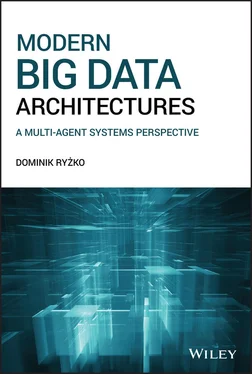

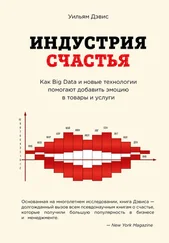

![Алексей Благирев - Big data простым языком [litres]](/books/416853/aleksej-blagirev-big-data-prostym-yazykom-litres-thumb.webp)
